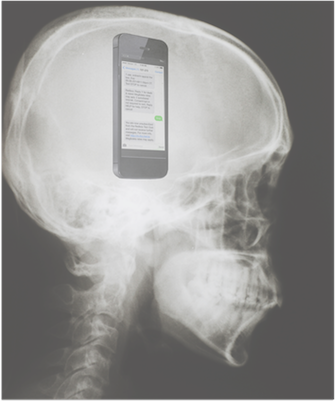SMS marketing can be a great tool when used correctly: it’s got a great response rate, it’s economical, it’s totally scalable, it’s easy to personalize, and people tend to look at an SMS message within seconds of receiving it. But SMS marketing can be a double-edged sword for people who don’t respect its awesome power.
You know Smaug, that gargantuan dragon from The Hobbit? You want that guy on your side. Don’t make him mad by sending too many SMS messages, and—above all else—don’t wake him up with a text message first thing in the morning. Don’t wake Smaug.
If you’re in a hurry, here’s a quick overview of the points I cover with this post.
According to a 2014 study by ExactTarget, the number one thing that prevents consumers from signing up for SMS campaigns is the fear that they will be “disruptive.” Marketers and advertisers who underestimate this fear do so at their own peril—consumers view their mobile devices as extensions of their own personal space, and they will protect that space accordingly. There has never been another media device with such an personal connection to its owner.
Think of it this way: do you feel naked without your tv? Of course not. But what about your cellphone? The TIME Mobility Poll reports that 81% of people couldn’t go more than a day without their cell phone. The fear of being separated from our mobile devices is now so widespread and so profoundly powerful, there’s actually a clinical term for it.
 On the plus side, this means that a well-planned, well-targeted SMS campaign works like uploading a “shop here” program directly into your consumer’s cerebral operating system. On the down side, it means that sending an unwanted SMS message to someone’s phone is every bit as invasive as sending an unwanted SMS message directly to their brain.
On the plus side, this means that a well-planned, well-targeted SMS campaign works like uploading a “shop here” program directly into your consumer’s cerebral operating system. On the down side, it means that sending an unwanted SMS message to someone’s phone is every bit as invasive as sending an unwanted SMS message directly to their brain.
Which brings me back to last Saturday.
Just like 68% of the population, I sleep with my mobile phone right beside my bed (that way, if a burglar breaks in during the night, I can play a quick round of Angry Birds). And, though my wife and I don’t always get the luxury of sleeping in on a Saturday morning, we’re grateful for those occasions when we get the chance. Like I said, I am NOT a morning person.
So, when some nice person at RedBox sent me an SMS message at 8:00 am, my wife and I met it with all the enthusiasm we would our alarm clock.

Rise and shine!
Much as I loved RedBox, and much as I loved saving a couple bucks here and there with their SMS program, it took me all of five seconds to type a decisive “STOP.” Their remarketing list lost a name.
Rule #1 of SMS Marketing: Don’t send messages to your consumers at 8 in the morning on a weekend.
In RedBox’s defense, I doubt it was deliberate. More than likely, it was a simple matter of whoever ran the SMS campaign not correctly segmenting their list by time zone. But it is a great example of just how important time of day is for SMS marketing. It’s not an exaggeration to say that human beings are hardwired to read text messages the moment we receive them. A study from mobileSquared reports that 90% of all SMS messages are opened within 3 minutes (as compared to the 78% of marketing emails that are opened… never – Smart Insights).

Image Courtesy of Source Mobile
Again, it’s a double-edged sword. This immediacy is also the primary benefit of SMS as a marketing strategy. It’s possible to capture consumer attention and drive action at specific times of day, and on specific days of the week. Ideally, you’ll want to A/B test several different campaigns to see what works best for your brand, but there are a few tried and true best practices:
Time of Day
The ideal time to send out SMS messages obviously varies somewhat from industry to industry, but a study by Zokem Mobile Insights found that SMS messages are most likely to be successful during business hours (10 a.m. – 4 p.m.). If you are marketing to a large geographic area, remember to take various local time-zones into consideration, or you risk prodding your most loyal customers in their sleep.
Day of the Week
No mondays, no weekends. Unless you represent a weekend-centric business like RedBox, sending messages on these days tends to inspire the worst performance, and the highest rate of opt-outs.
Frequency
Here’s the big one. It’s a balancing act; you need to message people often enough to keep them engaged, but not so often that they feel bombarded. Avoid message fatigue. Sending
out weekly offers during normal seasons, and bi-weekly offers during holidays/peak seasons, is optimal.
Relevancy
If Mobile Ads are like one night stands with consumers, then an SMS program is a marriage. Successful long-term remarketing requires delivering content that your base will actually want to take advantage of. Target local audiences with local offers, create genuinely valuable promotions for useful products, and take advantage of holidays and seasonal themes.

This holiday-themed game saw great results
In March of 2014, a number of Ace Hardware dealers saw great results with an SMS message linking to a St. Patrick’s Day-themed mobile Mini-Game. Consumers loved it so much, the Ace Dealers saw a 300% increase in click-through rate for all SMS messages in the following month.

